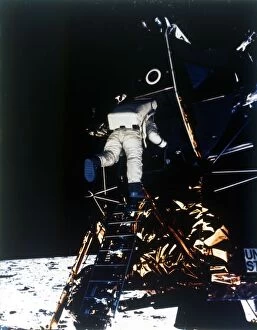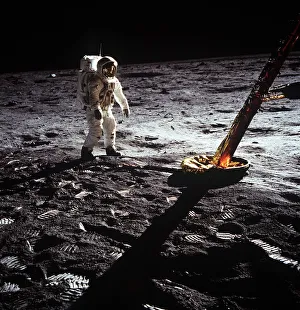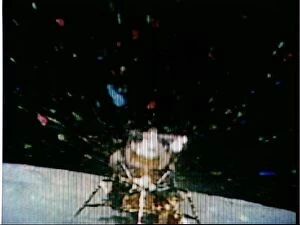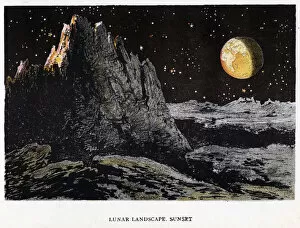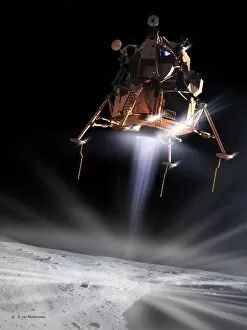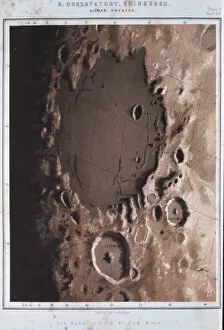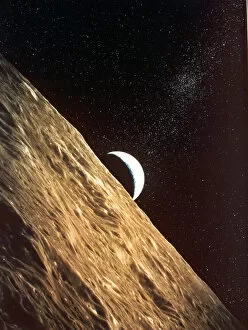Lunar Surface Collection (#2)
"Exploring the Enigmatic Lunar Surface: A Journey Through History" Earthrise - Apollo 8, December 24, 1968: Captured by William A Anders
For sale as Licensed Images
Choose your image, Select your licence and Download the media
"Exploring the Enigmatic Lunar Surface: A Journey Through History" Earthrise - Apollo 8, December 24, 1968: Captured by William A Anders, this iconic image showcases our home planet rising above the barren lunar surface, a reminder of humanity's small place in the vastness of space. Craters on the Moon: NASA's stunning photograph reveals a mesmerizing landscape adorned with countless craters, evidence of cosmic collisions that have shaped the lunar terrain over billions of years. Buzz Aldrin on the Moon, Apollo II mission, July 1969: Neil Armstrong immortalized his fellow astronaut as he stepped onto the lunar surface for mankind's first moonwalk—an extraordinary moment etched into history forever. Harrison Schmitt works the scoop on the lunar surface, Apollo 17 mission, December 1972: In an awe-inspiring display of human ingenuity and determination, Schmitt skillfully operates a scoop to collect samples from beneath the dusty regolith—a testament to scientific exploration at its finest. The Rover is dwarfed by a giant rock on the lunar surface, Apollo 17 mission, December 1972: Against a backdrop of immense boulders and rugged landscapes lies an intrepid rover—humanity's trusty companion for traversing this alien world in search of knowledge and discovery. Astronaut with Lunar Roving Vehicle on the Moon, 1970s: This captivating image captures an astronaut beside their futuristic mode of transportation—the Lunar Roving Vehicle—an engineering marvel that allowed them to explore greater distances across our celestial neighbor's desolate plains. Harrison Schmitt collects lunar rake samples, Apollo 17 mission, December 1972: With precision and care befitting an explorer-scientist hybrid role model like Schmitt himself; he meticulously gathers rake samples from beneath layers upon layers of ancient moon dust—a treasure trove of lunar secrets.

